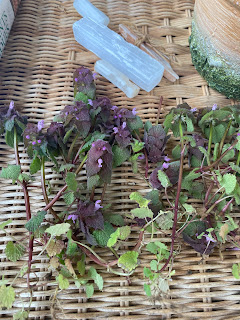Benefits and Uses of Wild Herbs: Purple Dead Nettle
Although Purple Dead Nettle (Lamium purpureum) is native to Europe and Asia, this wild herb is probably growing in your own lawn right this very moment!
The herb has conical, fuzzy green leaves and purple blooms, is low lying and likes to grow closely to another plant that resembles it, henbit.
Henbit, while still edible and great for chicken feed, has circular leaves that go all the way around the stem.
Purple Dead Nettle is a member of the mint family and grows in gardens, alongside of the road or in meadows. Its various locations are the reason it is commonly mistaken for just another weed.
Nothing could be further from the truth, however, so let’s explore just a fraction of PDN’s health benefits and edible uses.
Medicinal Uses of Purple Dead Nettle
PDN is an astringent, a diuretic and a purgative. This wild herb also has anti-inflammatory, anti-bacterial and anti-fungal properties.
The leaves can be used on cuts and stings. Simply pick the leaves, mush them a bit between your fingers and place on the wound to decrease inflammation and the chance of infection.
The leaves can be infused into any carrier oil and made into a first aid salve by adding beeswax and even essential oils.
To learn how to make your own herbal infused oil, check out my video here, https://youtube.com/shorts/iIM-5cvccQc?si=mdOF4NH71ouQPCBi.
Purple Dead Nettle infused oil can also be used in soaps and lip balms for sensitive skin.
Dried leaves of the herb can be used in tea to help alleviate seasonal allergy symptoms and to clean out the kidneys. Be careful when drinking it as a tea because dead nettle is also a diuretic and a lexative.
Edibility of Purple Dead Nettle
The leaves of dead nettle are edible and the flowers are sweet, so they both can be used in smoothies, soups, and salads.
When combined with other edible wild herbs like Dandelion, Purple Dead Nettle makes a delicious pesto.






Comments
Post a Comment